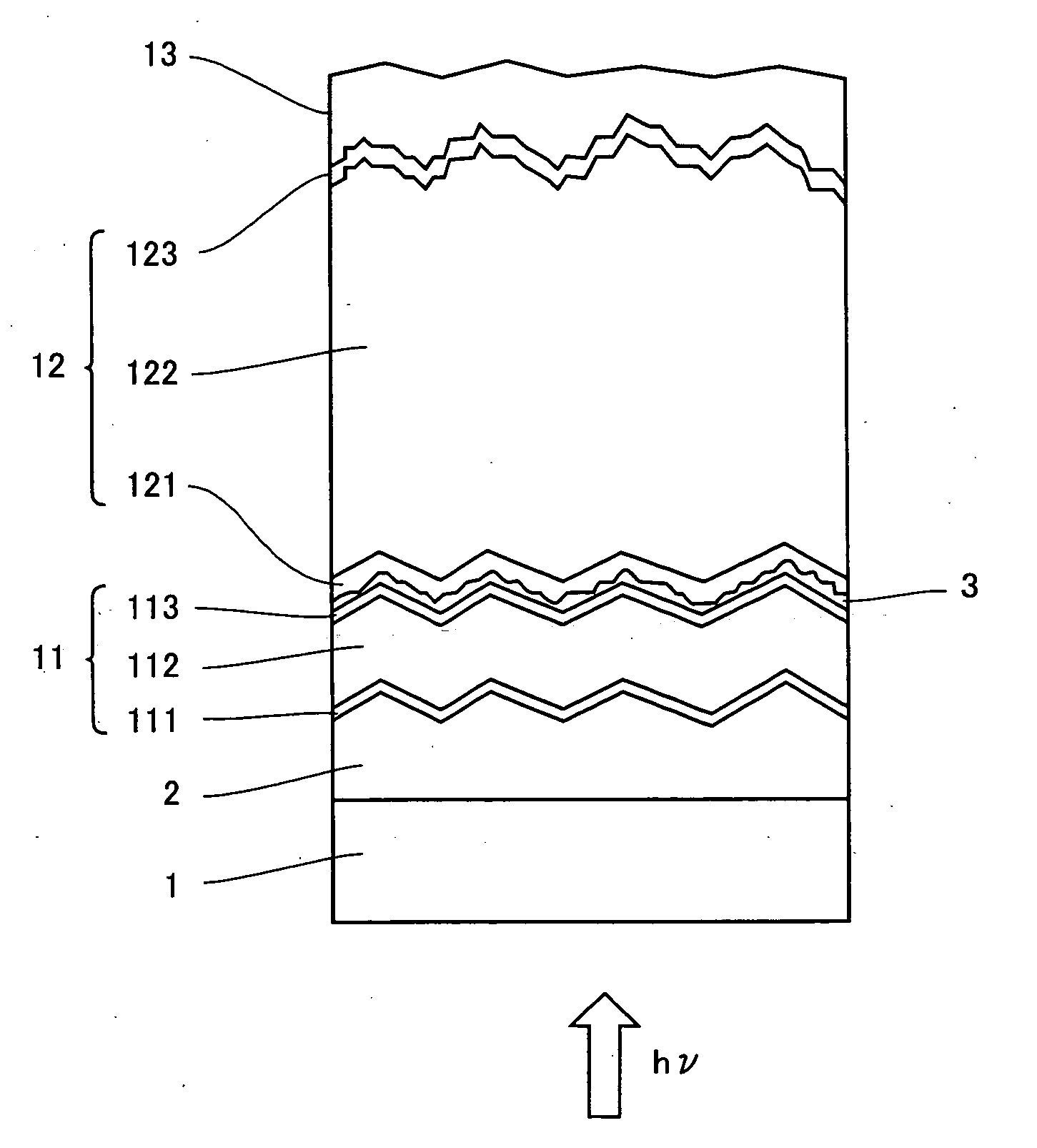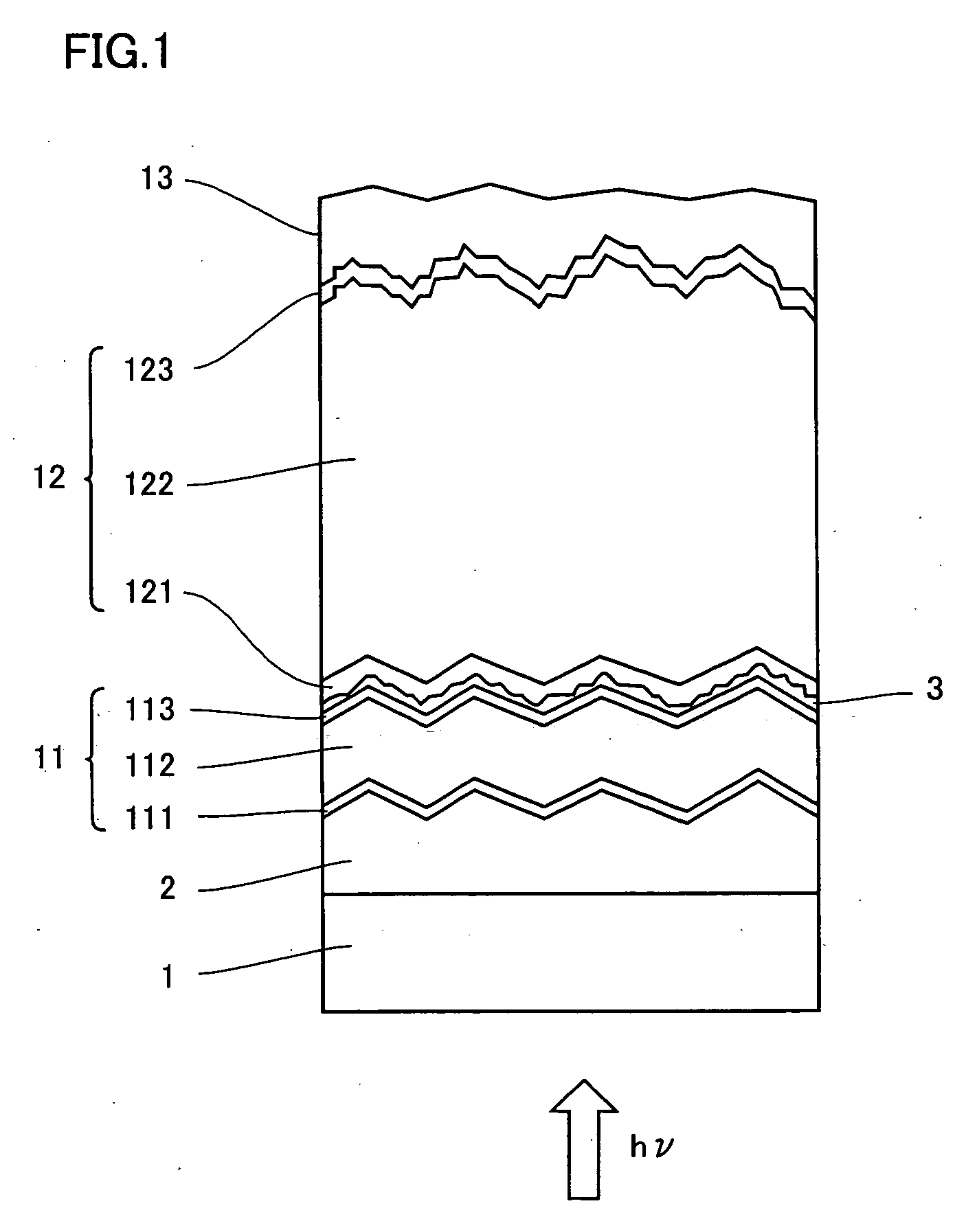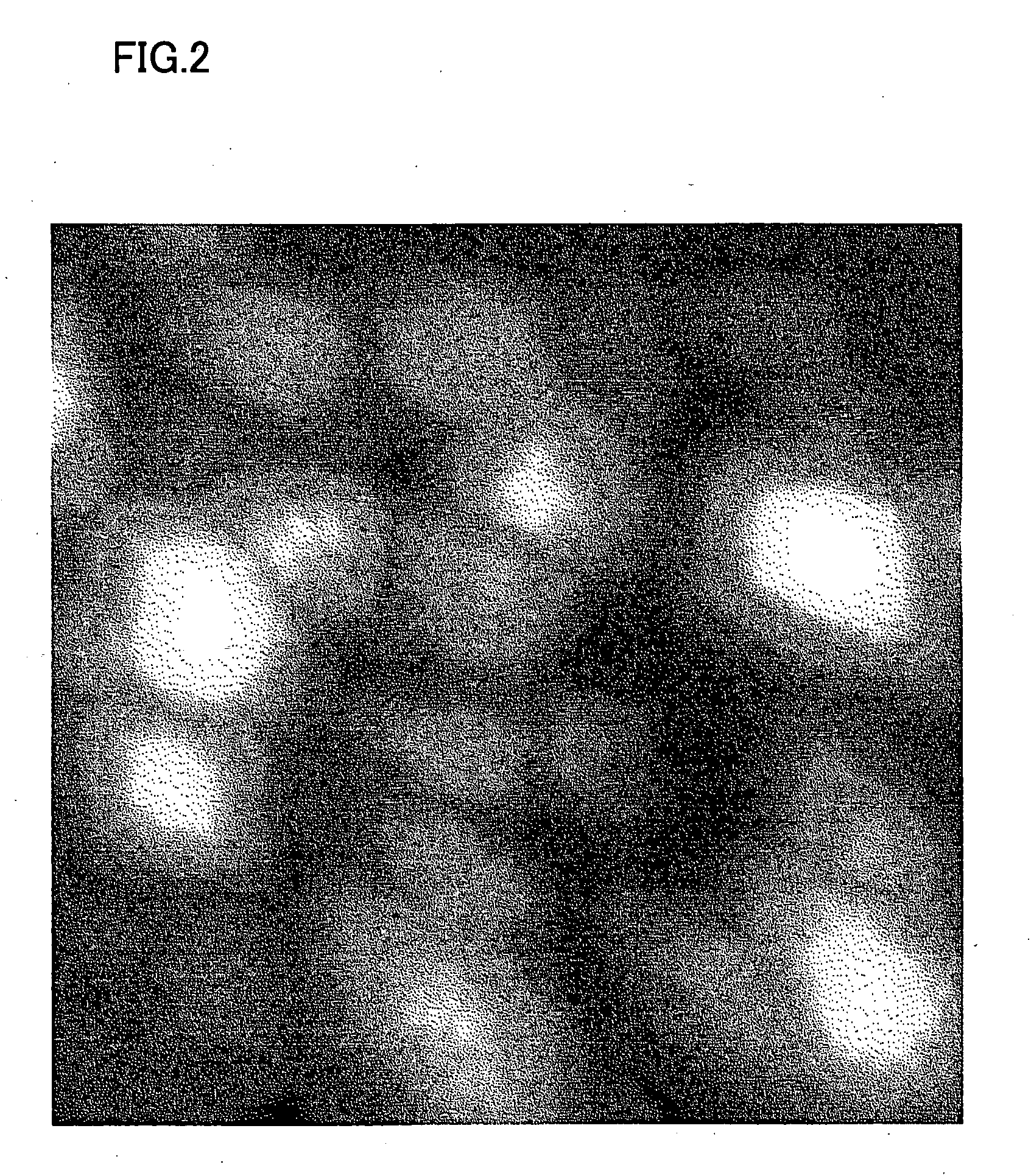Tandem thin-film photoelectric transducer and its manufacturing method
a technology of photoelectric converter and thin film, which is applied in the direction of coating, chemical vapor deposition coating, semiconductor devices, etc., can solve the problems of limited amount of photoelectric conversion, insufficient light absorption in a longer wavelength range, and the effect of increasing the conversion efficiency
- Summary
- Abstract
- Description
- Claims
- Application Information
AI Technical Summary
Benefits of technology
Problems solved by technology
Method used
Image
Examples
example 1
[0053] A hybrid thin film photoelectric converter as shown in FIG. 1 was fabricated as Example 1. On a square glass substrate 1 having a thickness of 1.1 mm and a side length of 127 mm, a tin oxide film having an average thickness of 800 nm and having a pyramidal surface unevenness was deposited by thermal CVD to form a transparent electrode 2. Obtained transparent electrode 2 had a sheet resistance of about 9 Ω / □. When glass substrate 1 with transparent electrode 2 formed thereon was illuminated by a standard light C having a specified wavelength distribution, its measured haze factor was 12%. Then, the average height difference d of unevenness on the upper surface of transparent electrode 2 was about 100 nm. An amorphous silicon photoelectric conversion unit 11 was formed on transparent electrode 2 by plasma CVD. Unit 11 was composed of a p-type amorphous silicon-carbide layer 111 of 15 nm thickness, an i-type amorphous silicon photoelectric conversion layer 112 of 0.25 μm thickne...
example 2
[0061] In Example 2, a hybrid thin film photoelectric converter was fabricated in a manner similar to that in Example 1, except that a zinc oxide film of 30 nm thickness was deposited at a substrate temperature of 150° C. by sputtering to form intermediate layer 3.
[0062]FIG. 5 shows an AFM image of the upper surface (in a rectangular area of 1.5 μm×9.0 μm) of a zinc oxide film formed on a flat glass plate under sputtering conditions similar to those for intermediate layer 3 of Example 2, and FIG. 6 shows an uneven surface geometry measured by AFM along a broken line in FIG. 5. In the graph of FIG. 6, each scale of the lateral axis indicates 0.1 μm and each scale of the vertical axis indicates 5 nm. In the uneven surface geometry in FIG. 6, the distance between E and F that corresponds to a diameter of one typical small projection (corresponding to a pitch measured parallel to the glass plate between two adjacent depressions) is 35.2 nm. When a square area of the zinc oxide film wit...
example 3
[0064] In Example 3, a hybrid thin film photoelectric converter was fabricated in a manner similar to that in Example 1, except that i-type crystalline silicon photoelectric conversion layer 122 had a thickness of 2.7 μm.
[0065] When output characteristics of a silicon-based thin film photoelectric converter (with a light reception area of 1 cm2) obtained in Example 3 were measured at 25° C. by illuminating with light of AM1.5 at a light intensity of 100 mW / cm2, the converter had a Voc of 1.36V, a Jsc of 12.2 mA / cm2, an F.F. of 73.6%, and a conversion efficiency of 12.2%.
PUM
| Property | Measurement | Unit |
|---|---|---|
| thickness | aaaaa | aaaaa |
| thickness | aaaaa | aaaaa |
| thickness | aaaaa | aaaaa |
Abstract
Description
Claims
Application Information
 Login to View More
Login to View More - R&D
- Intellectual Property
- Life Sciences
- Materials
- Tech Scout
- Unparalleled Data Quality
- Higher Quality Content
- 60% Fewer Hallucinations
Browse by: Latest US Patents, China's latest patents, Technical Efficacy Thesaurus, Application Domain, Technology Topic, Popular Technical Reports.
© 2025 PatSnap. All rights reserved.Legal|Privacy policy|Modern Slavery Act Transparency Statement|Sitemap|About US| Contact US: help@patsnap.com



